Sacsayhuaman or Saqsaywaman is one of the Inca’s constructions as surprising as Machu Picchu. Probably it began to be constructed during the government of the Inca Pachacutec in Century XV; however, it was Huayna Cápac who finish it in the 16th century.
It is estimated that we only observe 40% of the Archaeological Complex of Sacsayhuaman. Even so, the site has structures of up to 125 tons of weight impossible to transport by human means and without knowledge of the wheel or the use of some mortar for their union covering 3 thousand hectares of colorful Inca enclosures, landscapes and abundant flora and fauna local.
Some believed that it would be a military construction or Inca stone fortress, because of the great battle for the defense of the city of Cusco at the hands of the Inca 'Cahuide' and his army against the Spanish in the famous Battle of Sacsayhuaman, but; numerous studies claim that Sacsayhuaman is a religious site, finding pottery and various skeletal remains and their paraphernalia for many places in the Archaeological complex.
In conclusion, the true purpose of this great construction is still unknown, and many questions arise that make this construction a mysterious and magical place for local and foreign visitors.
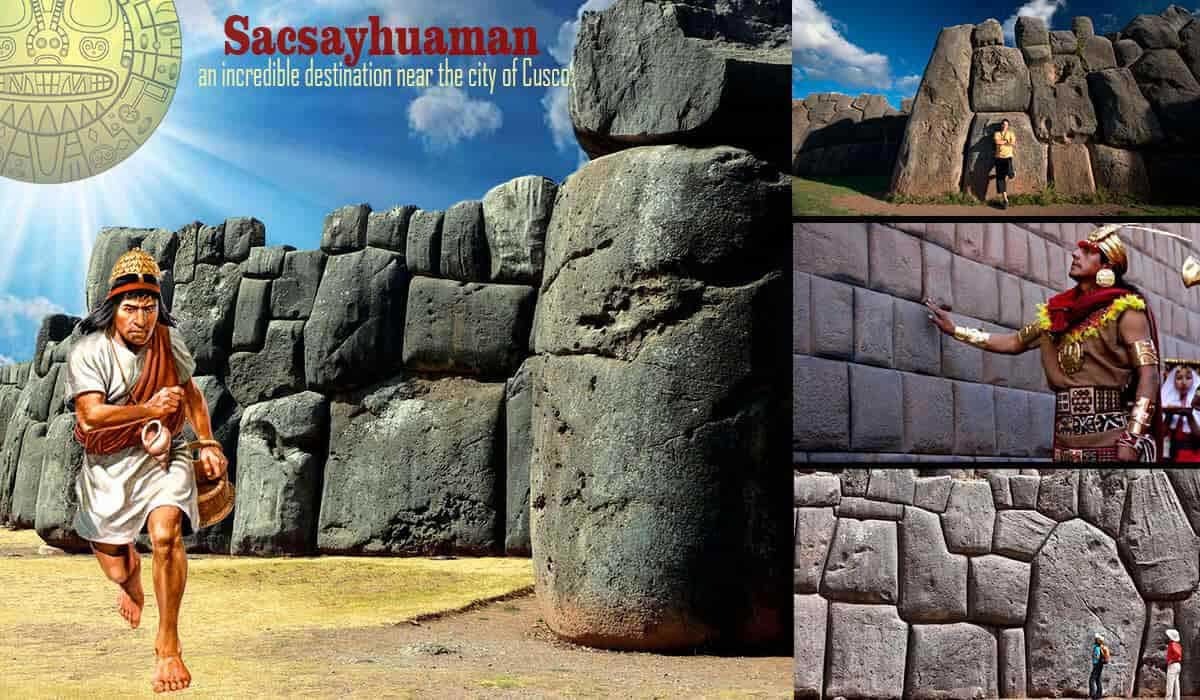
General information about Sacsayhuaman:
- Location: Sacsayhuamán is an archaeological site located north of Cusco, passing through Qolqanpata - Current neighborhood of San Cristobal.
The Sacsayhuaman distance from Cusco is only 2 kilometers north of the city center through an asphalt road.
- Climate: Sacsayhuaman has a dry and temperate climate. The average temperature per year is 12 ° C. There are 2 stations during the year. The rainy season (from November to March) presents a greater amount of fluvial rainfall. The dry season (April to October) has hottest days in the day and cold at night.
- Schedules: Sacsayhuaman opens its doors from 7 a.m. to 6 p.m.
- Altitude: 3600 m.s.n.m.
- Price: to visit Sacsayhuaman, you must have the Tourist Ticket of Cusco - BTC either general or partial.
*Many tourist agencies offer the City Tour Cusco acquiring the ticket for you, making your visit to the Inca capital unforgettable.
What does Sacsayhuaman mean?
Historian Victor Angles Vargas concludes that Sacsayhuaman is a Quechua compound word, which comes from two words: 'Sacsay' which means to be satiated, and 'Waman' which is a hawk, according to the Historian, the Halcon was a protective totemic entity of the first Inca Manco Qhapac.
Another version of the meaning of Sacsayhuaman also requires a Quechua compound word: 'sacsa uma' (sacsa = speckled, uma = head). This is an acceptable theory knowing that the city of Cusco has since Inca times the layout of a Puma, considered sacred and deity of the Inca's tutelary. Within this peculiar form, Sacsayhuaman would become the head of the puma.
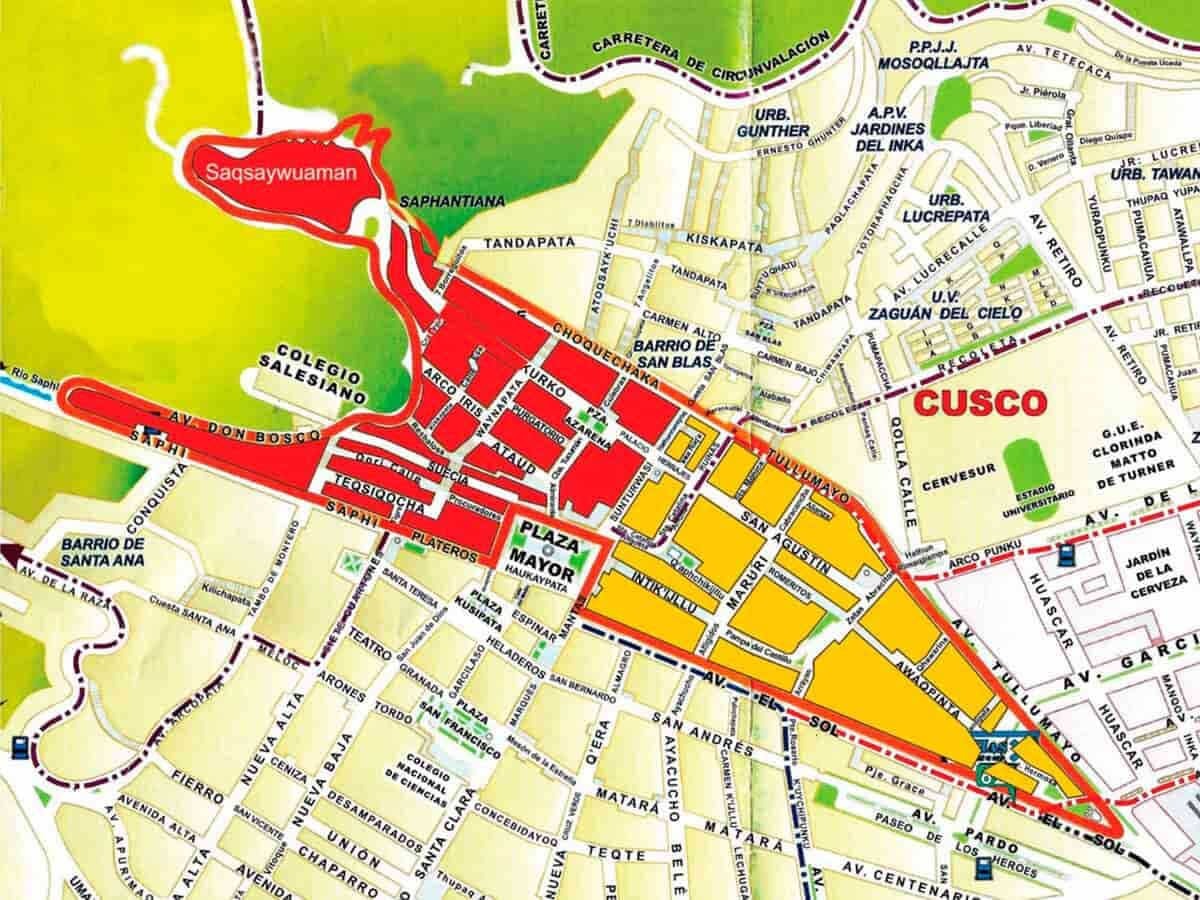
Architecture of Sacsayhuaman
The construction itself is special and unique, some stones that are part of the construction are gigantic and make one ask numerous questions such as: Why was Sacsayhuaman built? How could they transport the huge blocks? Making only hypothetical assumptions.
 |
Sacsayhuaman Peru |
On the other hand, it is inexplicable to decipher how the Incas could cut the stones with such skill and ingenuity that not even a leaf enters the stones asking us about the technique used in the construction with huge stones, carefully cut and fitted.
Throughout the archaeological complex we observe figures designed in stones and rocks, entrances to underground tunnels (chicanas) and ritual sites, assuming the worship of numerous gods of Inca mythology.
Sacsayhuamán, was the greatest architectural work that the Incas built during its apogee demonstrating the greatness of a wonderful culture in different areas.
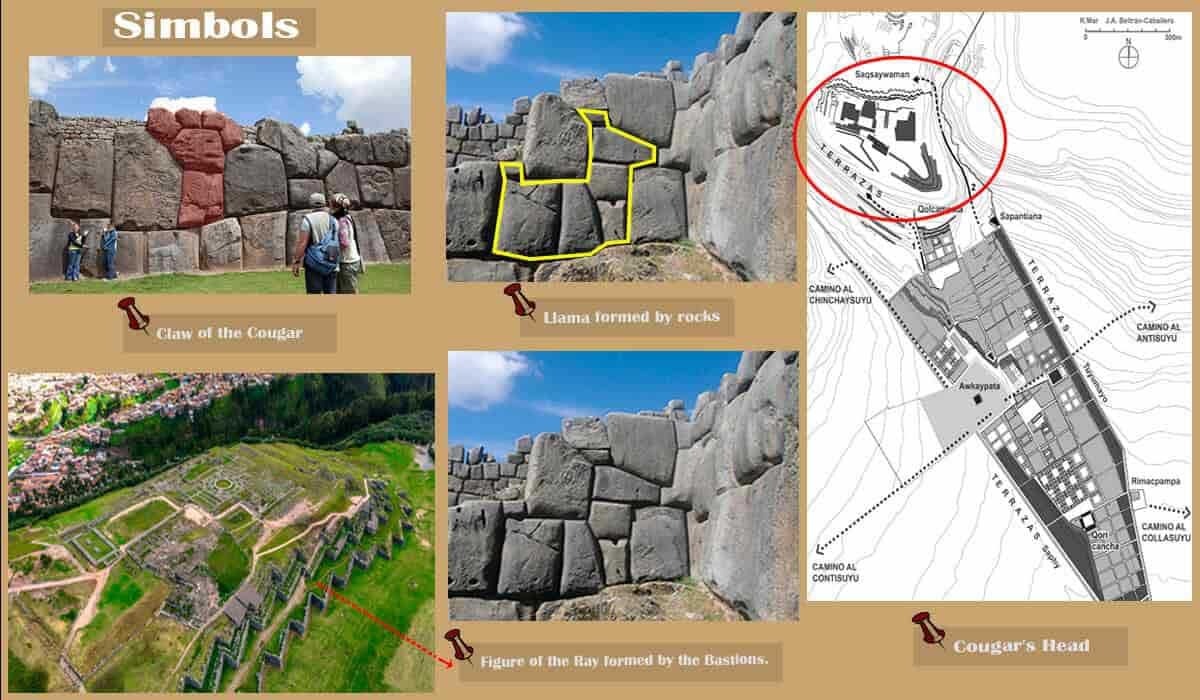
How to get to Sacsayhuaman?
After flying from the capital of Perú, Lima, you will arrive in Cusco. In order to reach the archaeological complex of Sacsayhuaman you can take a City tour of any Cusco Travel Agency, most of them offer this service visiting the main attractions of the Inca capital.
From the Main Square of Cusco you can take the Cusco Sightseeing Bus that will take you to the Cristo Blanco as well as a private taxi taking only 15 minutes to reach the Inca fortress.
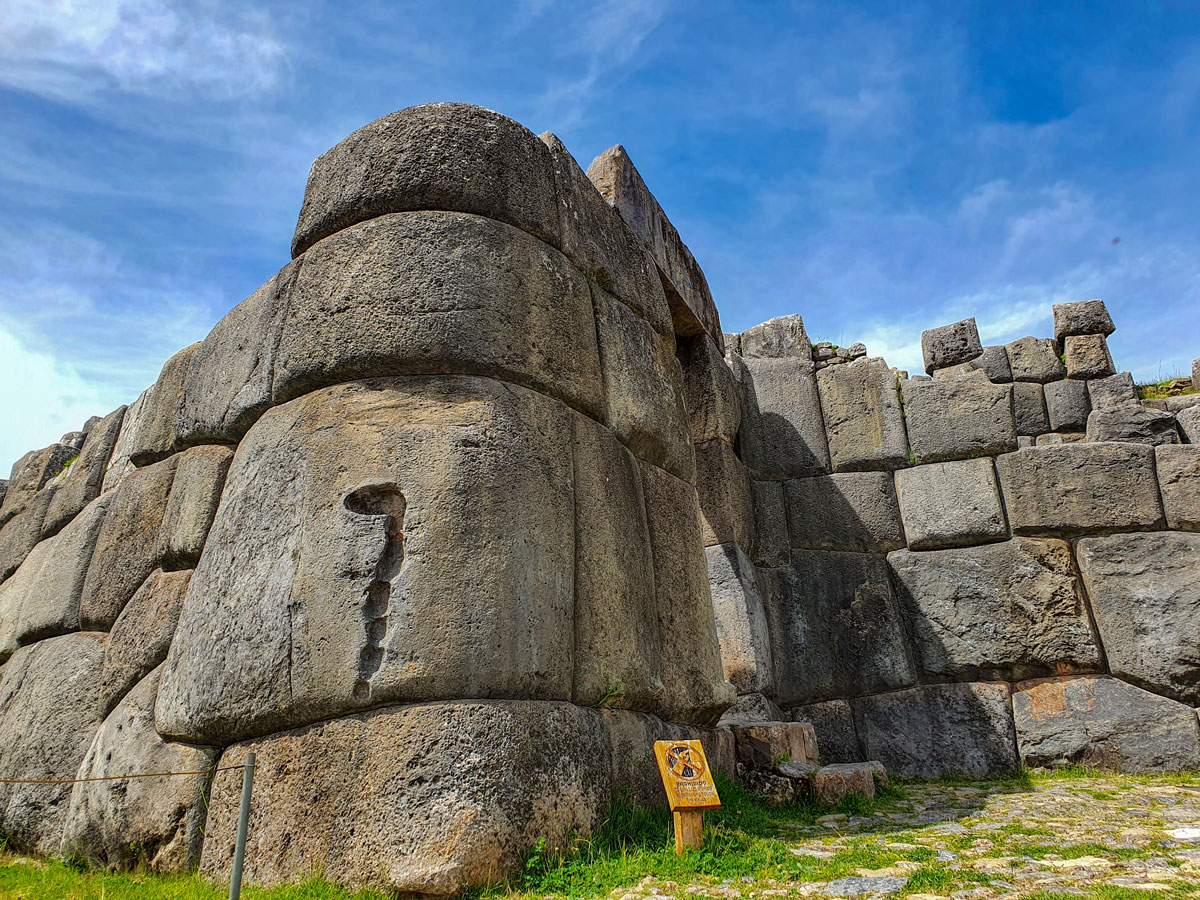 |
Sacsayhuaman Cusco Peru |
You can also visit the Inca fortress of Sacsayhuaman on foot, going up the Suecia street, turn right towards the church of San Cristóbal following the bend in the road. Here you will join the ancient Inca route between Cusco and Sacsayhuaman. The climb is steep and takes about 30 minutes from the center of Cusco, but it will be worth it to find numerous stone buildings finely carved and placed making this expedition very informative about the 'Cusco Inca'.
Tourist Activities in Sacsayhuaman
Sacsayhuaman and the Festival of the Sun 'Inti Raymi'
The sun was the main god of the Inca Empire, for that reason every June 24; day when the sun is at its furthest point from the earth (winter solstice), the Inti Raymi or Feast of the Sun is celebrated in Sacsayhuaman, begging for the return of the sun star with sacrifices and a colorful celebration.
From 1944 until today the Inti Raymi is a theatrical representation (in Quechua - the original language - with translation into Spanish) taking place in 3 important places such as Coricancha, the Main Square and Sacsayhuamán.
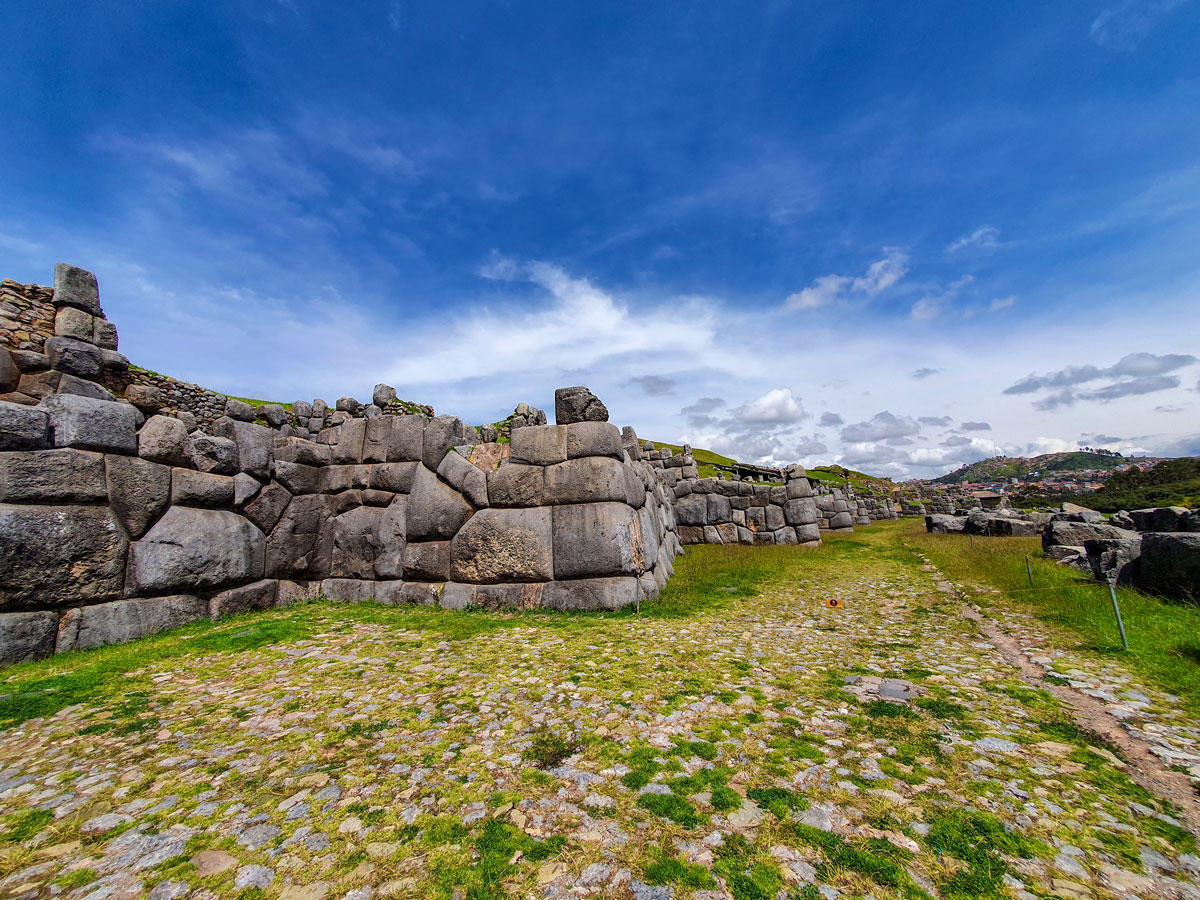 |
Sacsayhuaman Cusco |
Nearby archaeological sites to visit
Qenko
From the Quechua language meaning labyrinth. Qenqo presents a circular amphitheater and rocky stairs in zigzag form. In the interior it has a meticulous and finely elaborated altar where agrarian rituals were performed, in the upper part of this rocky place there is a series of seats, steps and carved stairways.
Tambomachay
It would have fulfilled an important religious function linked to water and to the regeneration of the earth. The place has an approximate area of half a hectare demonstrating the high architectural and hydraulic skills in the Inca constructions.
Puca Pucara
The complex has numerous enclosures, interior plazas, aqueducts, watchtowers and roads. It would have served as a ‘tambo’ or place of rest and lodging. It is said that each time the Inca visit Tambomachay, he was accompanied by a large delegation that was staying in Puka Pukara. By their appearance they call it a fortress.
*All this attractions are also included in the Tourist Ticket of Cusco, which let you know even more the famous history of the Inca culture in its capital Cusco.
Other Tours in Cusco:
The famous Inca Trail Tours are the most popular excursions in Cusco - Peru; and considered among the best walks in the world.
- Salkantay Trek 5 Days
- Inca Quarry Trail 4 Days
- Machu Picchu 3 Day Hike
- 2 Day Inca Trail Tour
- 2 Day Inca Trail with camping
If you want to visit Machu Picchu, we recommend you to book your Machu Picchu Ticket in advance, so you will enjoy your Vacation in Machu Picchu without any problem.
What to see in Sacsayhuaman?
Due to its elevated location Sacsayhuaman offers an amazing view of Cusco. You can see peaks like the Ausangate and Pachatusán. Considered Sacred (Apus) for the Incas. All The archaeological complex has very beautiful places, the majority with abundant history and mysteries still unsolved.
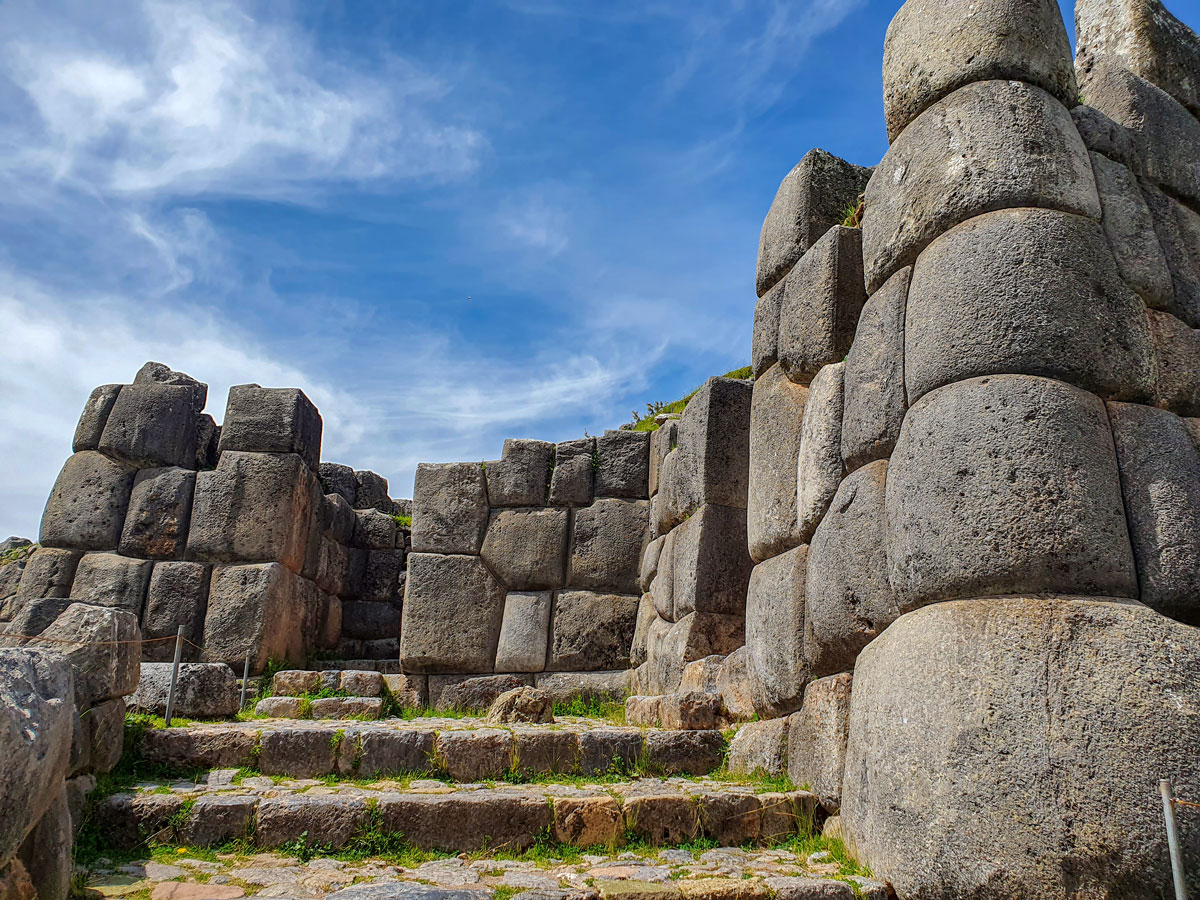 |
Cusco Sacsayhuaman |
The Towers
The towers are located on the Inca fortress called: Muyucmarca, Paucamarca and Sallaqmarca. It is known that in this part of the ruins of Sacsayhuaman there was an abundance of water. Even now we can observe the aqueducts even in perfect conditions.
1. Muyucmarca
Also known as 'La torre de Cahuide'. It is a huge building (today there is only the base) with an important historical value. It is known that the Inca warrior Titu Cusi Huallpa (Cahuide) jumped from the highest part of Muyucmarca not to fall prisoner of the Spaniards during the Inca resistance of 1536.
2. Paucamarca
The remains of this tower are located east of the archaeological complex. According to the chroniclers, they served to store water. At the moment it is still in excavations giving to discover a possible rectangular form.
3. Sallamarca
The remains of this tower are located in the center of Sacsayhuaman. It is interconnected with the other towers through tunnels. At present, only the foundations remain when they were destroyed by the Spaniards during the conquest.
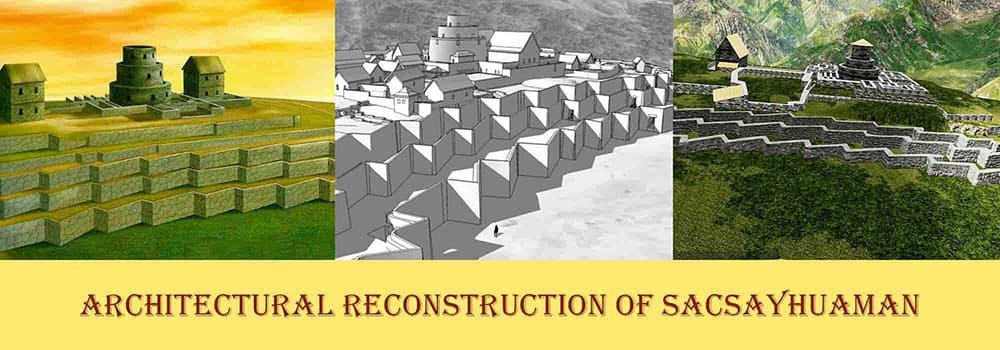
Group of Enclosures
These are enclosures supported on the hill from a short distance of the turrets. They are located in the direction of the Main Square of Cusco. They are interconnected by trapezoidal doors.
The Walls (Los Baluartes)
The walls are formed by huge blocks of stone that reach up to 9 meters high, 5 meters wide and 4 meters thick; the largest is estimated to have a weight of 125 tons, thus raising the question: What kind of people built with stones huge, carefully cut and fitted?
The giant rocks were assembled in a perfect way without any use of mortar. The main wall consists of three successive zigzag walls, the second and third overlapping the first. The platforms have an average of 360 meters long and are communicated by stairs and access doors of a fine and smooth stone finish.
Another theory raised by historians regarding the zigzag design of ‘The Wall’ indicates that it was a temple in honor of the lightning bolt ‘illapa’ in the Quechua language; also worshiped as a god in Inca Mythology.
*This is an acceptable theory being able to prove it flying over Sacasayhuman, which le tus observe a fascinating perspective of the whole complex.
The doors
They are located in the middle - central part of the bastions. They have a trapezoidal shape and served as an entrance to the tower’s area. Each door has its own name according to the Inca Chronicler Garcilaso de la Vega.
- Ajawanapunku: Door where the chicha (ancestral drink based on corn used for ceremonies and Inca rituals) is observed.
- T'iopunku: the salt door.
- Wiracochapunku: Wiracocha Gate.
Suchuna (Rodaderos)
The ‘rodaderos’ are a natural formation of diorite of volcanic origin. Over the years, it was molded in an arched way as a slider. Being visited by locals and tourists.
The throne of the Inca
The Inca throne is a stone structure in the form of a seat or bench. They were polished symmetrically with such perfection and with an unparalleled mastery, thus gaining the dimension of the throne of the sovereign of the Inca Empire.
* Numerous studies revealed that at the time of the winter solstice the sun's rays fall on this place, a prove of the wide and exact astronomical knowledge of the Inca culture.
Chincanas (Tunnels)
With current access, the small one is of short length and has become a distraction for the visitors, but more to the North, the great one that according to oral traditions relates that many people tried to find the end of this tunnel without any success. Even some did not manage to leave. It is believed that this tunnel leads to the Coricancha (Temple of the Sun). Currently, the entrance to this tunnel is closed to the public.
According to the geologist Dr. Carlos Kalafatovich, these tunnels, called ‘chincanas’, correspond to the undermining by action of groundwater that circulated in the caves. Its majesty make it one of the most surprising mystical architectural expressions of the Inca culture.
When is the best season to visit Tambomachay?
The best season is to do it in the dry season, which covers the months April to the end of September. In October the rains begin and you can find Machu Picchu covered by clouds. If you travel in June, we recommend you to book the Inti Raymi 2025 Tour that takes place in June 24th, and also hike the Palcoyo Mountain Tour, which is an incredible Rainbow Mountain located in the Andes.
Additional data
- According to images obtained by means of radar, Sacsayhuamán communicates in a straight line with the Coricancha, with Marcahuasi (Convent of Santa Catalina in Cuzco), the temple of Inca Huiracocha (today Cathedral of Cusco), the Huáscar Palace, the temple of Manco Cápac in Colcampata, current neighborhood of San Cristóbal and Huamanmarca.
- The multiple investigations suggest that the perfect astronomical alignment of these temples would rule out the presumption that the Incas only had the planet Venus as astronomical reference, but that from this revolutionary discovery it could be established that they were also guided by the Sun, the Moon, the Southern Cross and the Pleiades (stars of the Taurus constellation).






